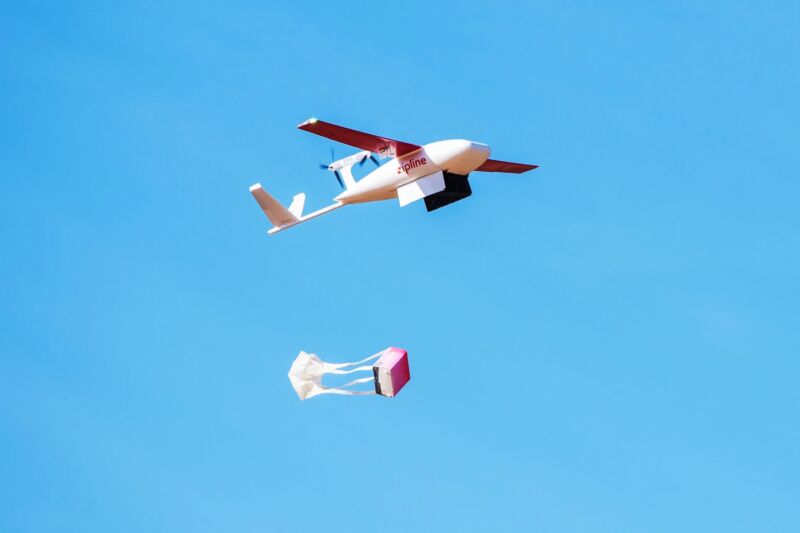Drones have transformed blood delivery in Rwanda

Enlarge (credit: Zipline International)
Six years ago, Rwanda had a blood delivery problem. More than 12 million people live in the small East African country, and like those in other nations, sometimes they get into car accidents. New mothers hemorrhage. Anemic children need urgent transfusions. You can't predict these emergencies. They just happen. And when they do, the red stuff stored in Place A has to find its way to a patient in Place B-fast.
That's not a huge problem if you live in a city. In the United States and the United Kingdom, 80 percent of the population clusters around urban hubs with high-traffic hospitals and blood banks. In African nations like Libya, Djibouti, and Gabon, about 80 to 90 percent of the populations live in cities, too. But in Rwanda, that number flips: 83 percent of Rwandans live in rural areas. So, traditionally, when remote hospitals needed blood, it came by road.
That's not ideal. The country is mountainous. Roads can be hot, long, and bumpy. If kept cool, donated blood can be stored for just a month or so, but some components that hospitals isolate for transfusions-like platelets-will spoil in days. A turbulent drive is not a perfect match for such finicky cargo.
Read 23 remaining paragraphs | Comments